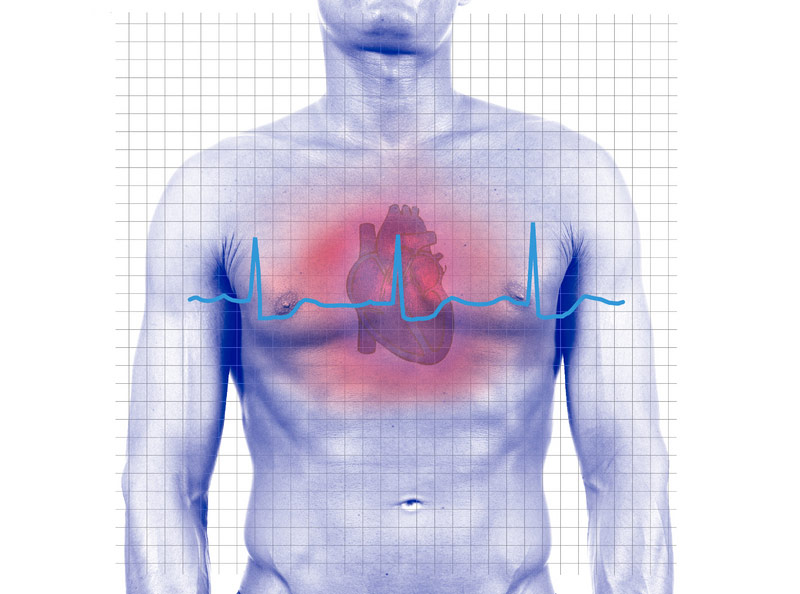How Heart Attacks Strike
The heart attack of Enron founder Ken Lay was one of more than a million that strike Americans each year. Lay, who died of the condition, was 64.
A heart attack seems to strike out of nowhere, but it actually involves a sequence of steps that build over years to culminate in a crisis experienced over minutes or hours.
The typical fatality of a heart attack is a man over 65 years old, but they can occur at any age in men and women. Women's heart attacks are more likely to involve "silent" symptoms that are harder to recognize than men's. About 1.2 million Americans suffer from heart attacks annually, and about 40 percent die from them.
Recent research shows that marital spats or the loss of a loved one both increase the risk of heart problems.
Heart attacks can be signaled by nausea, dizziness, a shortness of breath, palpitations, unusual sweating, and the classic pain in the chest that radiates to the extremities (called angina). Inside, a catastrophic number of heart cells are starving to death for lack of oxygenated blood, and the heart loses its ability to pump.
The pump
The heart is muscular organ. The average heart beats 100,000 times and pumps about 2,000 gallons of oxygenated and nutrient-rich blood daily. Blood first travels from the heart to the lungs where it is re-oxygenated before it returns to the heart to be pumped out to a superhighway of arteries to supply oxygen and nutrients to the brain, digestive tract, and rest of the body's tissues and systems.
Sign up for the Live Science daily newsletter now
Get the world’s most fascinating discoveries delivered straight to your inbox.

Heart
ENLARGE IMAGE
The first step leading to a heart attack is that the two primary coronary arteries supplying oxygen and nutrients to the heart muscle narrow as a result of fat that packs up over time along the walls of the arteries. This build-up, called arteriosclerosis, forms a plaque that's hard on the outside and soft on the inside.
Down the line, when one is under physical or other stress, the plaque cracks or tears, and the body's emergency repair system rallies. Blood components called platelets stick to the fat that is now exposed by the crack or tear, forming a clot.
If your arteries are already narrowed though, the clot can completely block the blood supply downstream to the heart. Within a few minutes, muscle cells in the heart undergo damage and begin to die, this is a myocardial infarction heart attack. Usually, only part of the heart stops working; it keeps beating but starts to lose the normal rhythm. If a larger part of the heart is affected, it can stop beating entirely—cardiac arrest.
Every second counts
If you get to a hospital quickly, doctors can reopen the blood supply to the heart and prevent or even reverse the damage. In heart attack treatment, every second counts. Interestingly, a recent study found that heart attack victims who arrive at a hospital during off-hours or on the weekend wait longer for help and are at a higher risk of death.
Other heart attacks occur as a result of spasms in the coronary arteries that repeatedly constrict them. If they are already narrow, these spasms can cut off nutrients to the heart muscle and also result in a heart attack.
Heart attacks affect the region of the heart that was supplied with blood by the blocked artery that caused the attack. If treatment works, in about eight weeks, new heart muscle grows back, but it is scar tissue and never as strong as the original muscle cells.
Genetics determine who is at high risk for heart attacks. But we can lower the odds by doing things to keep arteries wide open. Tobacco smoking is one of the worst things you can do as it narrows the arteries. Exercise helps keep arteries clear and also staves off diabetes and obesity, which also narrow the arteries.
On the bright side, cardiac care has advanced significantly in the past 30 years. While heart attacks still kill, the death rate is much lower today than it once was. In fact, after decades as the leading killer of Americans under age 85, heart disease in 2005 gave way to cancer in the top spot.
- Diagram of the Heart
- Fantastic Voyage to Save the Heart
- Marital Spats Raise Risk of Heart Attack
- Loss of Loved One Really Can Cause Broken Heart
- Doctor's Advice: Have Your Heart Attack During Normal Business Hours
- The Odds of Dying










